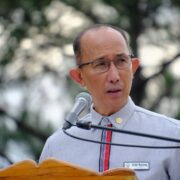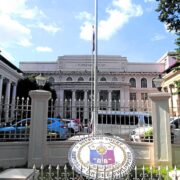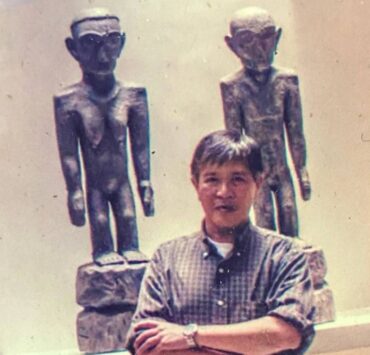Tony Perez, playwright and philosopher

In June 1984, I found myself in the then Silangan Restaurant on the fourth floor of the Cultural Center of the Philippines (CCP) for the press conference for that year’s winners of the CCP Playwriting Contest. Bulwagang Gantimpala’s artistic director Tony Espejo presented to the public the winning writers, whose plays would have their first productions that year. I was lucky enough to win Honorable Mention in the Special Adaptation Category. Tony Perez was the big winner in the Professional Division with “Biyaheng Timog.”
Though I had heard of Tony Perez and his works—his play “Gabun” had already been adapted into a movie before then—it was the first of many encounters I would have with him. A few years later, I began working at the CCP myself, and had the privilege of working in productions of his plays, mostly as technical director and/or lighting designer for “Florante at Laura (The Musical),” “Sa North Diversion Road,” “Oktubre, Noong Tayo’y Nagmamahalan Pa,” and “Nobyembre, Noong Akala Ko’y Mahal Kita,” and even stagings by Ateneo-based theater companies such as “Felipe de las Casas” and “Ignatius of Loyola.”
Thus came my introduction—or more aptly, indoctrination—to the art and philosophy of Tony Perez. Beyond the delight that his plays brought to an audience drawn into the often-complex world of his finely-drawn characters, presented through uniquely-crafted scenarios (soldiers in a truck, a couple in a car, families traveling to the south, characters across several generations), there lay under the surface of his works a consistent and continuing examination of man’s relationship with the universe, his fellows, and himself.
This was made even clearer when his collections of plays were published by the University of Santo Tomas (UST) Press, making it evident to those (like me) who were not particularly aware that his works are essentially a series of trilogies. “Oktubre,” “Nobyembre,” and Disyembre” are obvious examples. “Bombita,” “Sa North Diversion Road,” and ”Biyaheng Timog” make up another set.
Adarna
What’s more, a common motif in these trilogies is their structural foundation on the myth of the Adarna bird—the protagonist in each play is a manifestation, representation, or personification of the three brothers on a voyage to search for a cure for their ailing father, all drawn to the hypnotic song of the mystical bird.
For Tony was not just an astute observer and recorder of human travails and failings. He had the skill to go beyond what could be seen and delve into what can only be felt and sensed (which, I am sure, will have other Tony Perez fans pointing to his fascination with the other world, as demonstrated by his association with the spirit questors).
And while his understanding of philosophy underpinned his theatrical works, his rootedness in his community and society could be considered as the wellspring of his other literary outputs.
“Teener Tony Perez enthralled wih ‘Hoy Boyet, Tinatawag Ka Na, Hatinggabi Na Gising Ka Pa,’” said Onofre Pagsanghan, describing the first work he wrote for Dulaang Sibol’s Paligsahan Pandulaan at the Ateneo de Manila High School in 1967. And for over half a century since then, Perez continued to enthrall readers and audiences with his works.
We should consider ourselves lucky that he has given us the privilege to be able to revisit them time and again. And we should, for we surely will learn not just about him and his philosophy and worldview, but also truths about ourselves.
Dennis Marasigan is vice president/artistic director of the Cultural Center of the Philippines. He directed productions of “Gabun,” “Bombita,” and “Sa North Diversion Road,” and a film adaptation of the latter work.

















